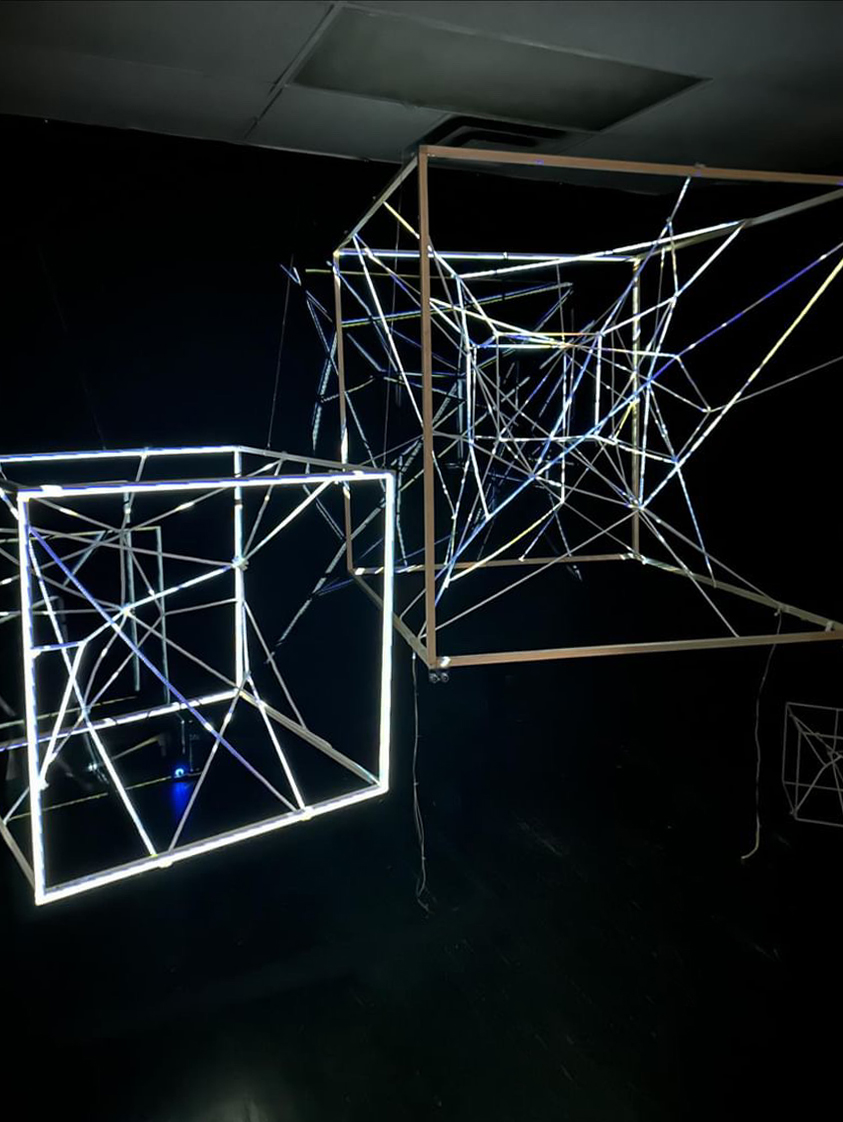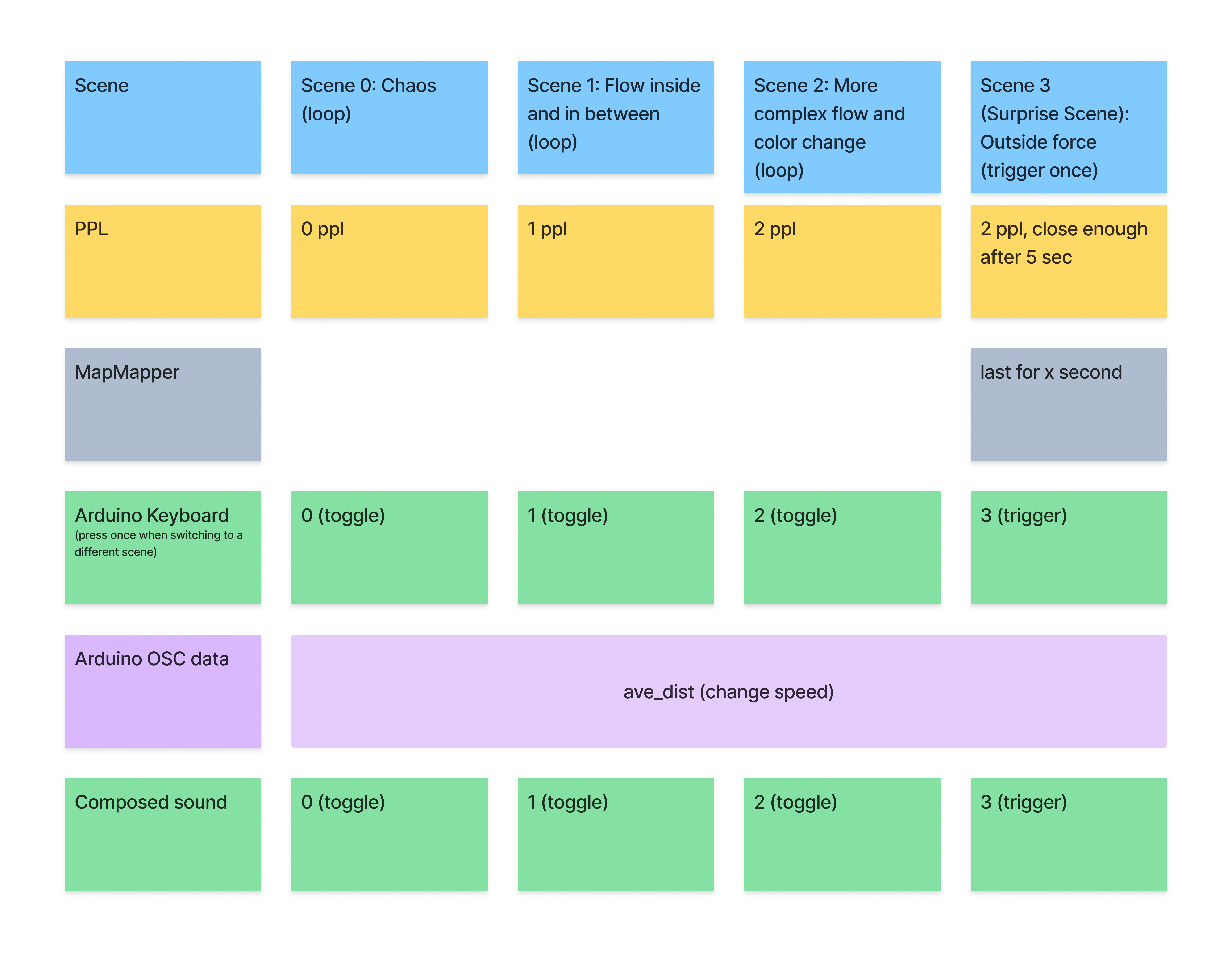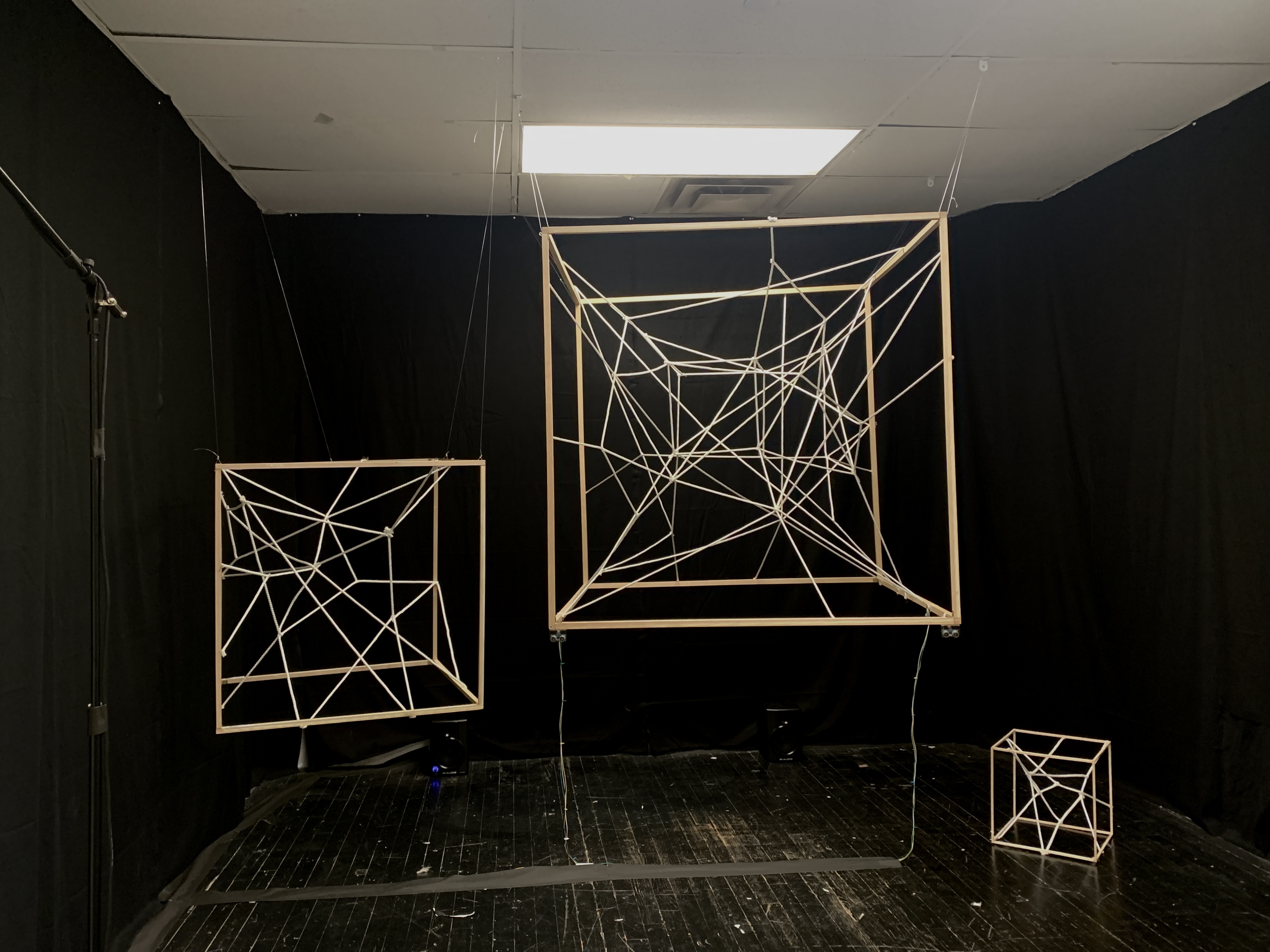Team Echo: Project List︎︎︎
Official Website︎︎︎
Instagram︎︎︎
TEAM CREDITS
Binna Lee: Concept & Art Direction, Research, Sculpture Design & Visual interaction in MedMapper
Sichun Zhang: Rsearch, Visual Design and interaction in MadMapper
Roy Yang: Ultrasonic Interaction between processing, madmapper and Max
Jay Torin: Sound Design & Interaction
Recognition & Awards:
ACM SIGGRAPH 2024 Art Gallery — Accepted for Exhibition (rescinded due to late materials submission)
NYC Resistor's 14th Annual Interactive Show: Third Space From the Sun, 2024
Exhibition & Artist Talk at the opening show organized by NotYet Art and UAAD at Sojourn Gallery
Shortlisted for the prestigious Red Dot Design Award, 2023.
Featured in Women United ART Magazine's 'In The Spotlight' segment, 2023.
Instagram︎︎︎
TEAM CREDITS
Binna Lee: Concept & Art Direction, Research, Sculpture Design & Visual interaction in MedMapper
Sichun Zhang: Rsearch, Visual Design and interaction in MadMapper
Roy Yang: Ultrasonic Interaction between processing, madmapper and Max
Jay Torin: Sound Design & Interaction
Recognition & Awards:
ACM SIGGRAPH 2024 Art Gallery — Accepted for Exhibition (rescinded due to late materials submission)
NYC Resistor's 14th Annual Interactive Show: Third Space From the Sun, 2024
Exhibition & Artist Talk at the opening show organized by NotYet Art and UAAD at Sojourn Gallery
Shortlisted for the prestigious Red Dot Design Award, 2023.
Featured in Women United ART Magazine's 'In The Spotlight' segment, 2023.
Immersive Inatallation, Experiential Design HCI
2024
Product Art & Design
MadMapper
Arduino + Ping Sensor
Processing
MAX
2024
Product Art & Design
MadMapper
Arduino + Ping Sensor
Processing
MAX
Echo
"Echo" is an immersive installation that explores the power imbalances of the digital era through a sophisticated application of intermediality. By intertwining visual, auditory, and interactive media, the project exposes how social media and AI distort reality, creating a multisensory environment where manipulated information obscures the truth.
The installation features a projection-mapped hollow cube sculpture, where threads of cascading lights dynamically react to audience voices and soundscapes, symbolizing the echo chambers of digital media. This intermedial approach not only enhances the immersive experience but also challenges visitors, as digital citizens, to discern authenticity within the fragmented and overwhelming data that shapes public consciousness.
The collaborative efforts of Binna Lee (Creative Director), Sichun Zhang (Visual Designer), Roy Yang (Creative Technician), and Jay Torin (Sound Designer) are pivotal in utilizing the transformative potential of artistic expression to critique prevailing digital narratives and encourage a deeper reflection on the impact of our digital interactions.
(This project is currently in development as an XR experience.)

Conceptualisation and Research Trajectory
![]()
Echo is an immersive spatial installation that explores the dynamics of echo chambers in digital communication. Through interactive spatial design and sensory stimuli, it prompts users to reflect on how information repetition influences perception and belief.
Echo embodies a design philosophy grounded in embodied HCI and phenomenological interaction, where perception and cognition emerge through movement, context, and sensory resonance. Instead of a screen, the environment itself becomes the interface—users think with their bodies as they explore, perceive, and are perceived.

Echo is an immersive spatial installation that explores the dynamics of echo chambers in digital communication. Through interactive spatial design and sensory stimuli, it prompts users to reflect on how information repetition influences perception and belief.
Echo embodies a design philosophy grounded in embodied HCI and phenomenological interaction, where perception and cognition emerge through movement, context, and sensory resonance. Instead of a screen, the environment itself becomes the interface—users think with their bodies as they explore, perceive, and are perceived.
Core Human-Computer Interaction (HCI) Concept in Echo
In Echo, we reframe traditional HCI principles for spatial and embodied interaction. Instead of using a mouse or screen, the user’s body becomes the interface.
Experience Flow![]()
![]()


Spatial cognition:
Ultrasonic sensors track users’ spatial position and proximity—engaging how users orient, navigate, and make sense of space.
Ultrasonic sensors track users’ spatial position and proximity—engaging how users orient, navigate, and make sense of space.
Embodied interaction:
The system responds not to commands, but to presence and gesture, aligning with embodied HCI theory where cognition is rooted in bodily experience.
The system responds not to commands, but to presence and gesture, aligning with embodied HCI theory where cognition is rooted in bodily experience.
Affordances:
Proximity itself becomes an affordance—by allowing users to trigger visuals and sound through movement, we create invisible affordances that guide interaction naturally.
Proximity itself becomes an affordance—by allowing users to trigger visuals and sound through movement, we create invisible affordances that guide interaction naturally.
Perception:
Through audio-visual feedback loops, we shape how users interpret their presence in the space. Responsive lights and sounds reinforce a sense of agency and participation.
Through audio-visual feedback loops, we shape how users interpret their presence in the space. Responsive lights and sounds reinforce a sense of agency and participation.
Natural mapping:
Interaction is intuitive and exploratory. Users don’t need instruction—they learn through immediate, embodied feedback as they move through the environment.
Interaction is intuitive and exploratory. Users don’t need instruction—they learn through immediate, embodied feedback as they move through the environment.
HCI Machanism in Experience Flow

The sensed data flows through:
- Arduino, which interprets distance as interaction intent (e.g., approaching triggers an emotional escalation and engagement),
- Processing, which parses and remaps physical movement into communication signals (OSC),
- Then passed to Max/MSP (sound) and MadMapper (visuals) to generate immersive, real-time responses.
This pipeline reflects a distributed interface—where computation is invisible, yet the user feels directly connected to the responsive environment.

Max
The audio interaction for Power Paradox is an extensive implementation of real-time audio processing and carefully tuned feedback systems. Audio input enters the custom Max patch via both an overhead microphone and a floor-mounted contact microphone, capturing any and all sounds in its given space, be they voices, footsteps, subtle vibrations, or otherwise. The audio is then passed to a granulator — an audio-processing algorithm that takes a sample, dices it into thousands of microsamples, and plays them back simultaneously to form a cloud of sound. All granularization happens in real-time, mangling the sounds of the audience into something entirely unrecognizable, shaped carefully into chordal patterns meant to feed into themselves.
The granulator is programmed to output its processed audio according to a number of pre-programmed chords, utilizing the audio phenomenon of feedback to endlessly iterate upon itself even without human presence. The audio is simultaneously jagged yet melodic, the contents of the sample both unrecognizable and foundational to the piece’s approach to context.
Installation: Physical Spatial Sketch:Application in spatial layout and interaction
